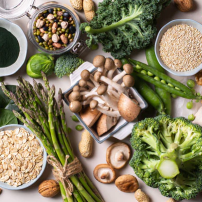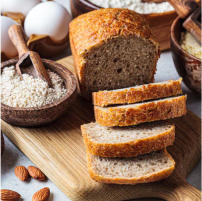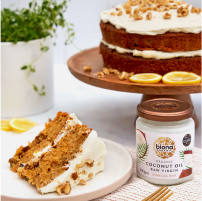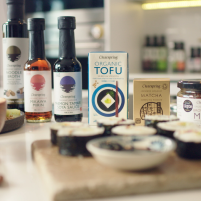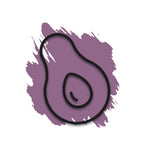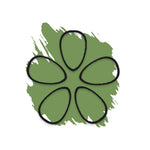If you've just been told you're coeliac or gluten intolerant, it can be a dauting time as you get to grips with this new way of life. Coeliac disease is a lifelong allergy to gluten which means you'll have to overhaul your diet and find ways to live without gluten which is found in wheat, rye and barley. But a gluten-free diet for those with coeliac disease is a lot more manageable these days.
It's way more prevalent today so there are plenty of gluten-free options and substitutes out there to help you navigate this new lifestyle. It's all about being informed; knowing what you can and can't have. If you're new to the condition or are looking for more information on a gluten-free diet for coeliac disease, you'll find all you need to know below.
What is Gluten?
Gluten is a 7 chain amino protein peptide found in specific grains which is indigestible by all human beings. In healthy digestive tracts, gluten (a protein in wheat and related grains) passes through the gut without causing any harm.
However, in susceptible individuals, eating gluten can cause severe damage to the small intestine and can lead to a heightened immune response and cause numerous digestive symptoms.
Coeliac Disease
Some people can have an intolerance to gluten that can cause inflammation of the digestive tract. This can cause digestive discomfort and present as IBS after a long period of exposure.
Alternatively, most people we encounter in store present with coeliac disease. This is a lifelong allergy to ‘gliaden’. This is a part of the gluten protein that is a large part of the grain of wheat, rye and barley. It causes damage to the small intestine which reduces the body’s ability to absorb nourishment from the foods we eat. This tends to run in families, therefore there is a genetic predisposition.
Symptoms of Coeliac Disease
Symptoms of coeliac disease can be mild or severe. Common symptoms include:
- diarrhoea (one of the most common symptoms due to absorption issues)
- abdominal pain
- bloating
- gas
- indigestion
- constipation
- vomiting (typically in kids)
How does it affect the body?
The walls of the small intestine become inflamed and damaged so that food absorption practically stops, giving rise to nutritional deficiencies. Strict adherence to a gluten-free diet can bring complete resolution of digestive discomfort and symptoms.
At Evergreen Healthfoods, our focus is educating customers; informing them where gluten is found so they can prevent contamination of their food. We also provide alternatives to help facilitate the removal of gluten from their diet completely.
Gluten-Free Diet for Coeliac Disease
Here we're going to take a look at the gluten-free diet for coeliac disease in a little more detail. Wondering where you'll find gluten? We've got a list of foods to avoid as well as some places you wouldn't expect to find it. You'll find drinks you can have below, as well as those to stay clear off, plus some general tips for your kitchen that will come in handy!
Where is Gluten found?
Gluten is found in all of the following grains: Barley, Rye, Oats, Wheat, Spelt
There are Gluten-Free (GF) oats available. However, they must carry the internationally recognised Gluten-Free symbol.
What other names are used to disguise Gluten in Food?
Gluten can hide under a variety of different names so it's very important to be aware of this. It can be helpful to be able to quickly recognise possible ingredients that might contain gluten so you can make a more informed decision when it comes to choosing products.
Below we have a list of the most popular alternative names for gluten-containing foods. This is essential information for those looking to completely remove gluten from their diet.
- Wheat
- barley
- rye
- oats
- oat milk
- spelt
- kamut (khorsasn wheat)
- bulgar wheat
- wheat starch
- cereal filler
- wheat bran
- wheatgerm
- wheatgerm oil
- semolina
- white cous cous and wholemeal cous cous
- durum wheat (pasta)
- farina
- kibbled wheat
- malt (from barley)
- malt extract (from barley)
- malt flavouring (from barley)
- seitan (made from wheat gluten and commonly used in vegetarian meals)
What about drinks?
We often get asked which drinks are suitable for people with coeliac disease. We've listed both gluten-free drinks and drinks that contain gluten below.
Gluten-Free Drinks
- water
- pure fruit juices
- tea
- coffee
- milk*
- spirits (whiskey, vodka, gin, rum, tequila)
- wine
- cider
- fortified wines (sherry, port).
*Milk
Although dairy milk is technically gluten-free, recent research has suggested that people with coeliac disease can also react to casein. Casein is a protein structure found in dairy products. Therefore, many coeliac sufferers will also opt to be dairy-free.
There are some great alternatives to milk available now if you do wish to avoid dairy. Keep in mind that oat milk is still not gluten free.
Dairy Milk Alternatives
All of these dairy alternatives also have yoghurt substitutes.
Non Gluten-Free Drinks
- ales
- beers
- lagers
- stouts
What else can I eat?
There are plenty of gluten-free foods you can happily enjoy. They are:
- meat
- fish
- fruit and veg
- cheese
- eggs
- potatoes
- lentils
And just because you’re gluten-free doesn’t mean you have to be grain-free. There are a number of grains you can include in your diet such as:
- brown rice and wild rice
- quinoa
- buckwheat
- millet
- tapioca
- corn
But be sure to check the labels to make sure you are using uncontaminated versions.
How to Prevent Contamination
So we've covered a gluten-free diet for coeliac disease. Now, on to the practical stuff. It only takes one single molecule of gluten to contaminate a gluten intolerant person. This means a crumb smaller than the eye can see can harm the intestine of someone who is gluten-free.
For example if you've used a knife to smear peanut butter on toast and then put that knife back in to the jar of peanut butter, you've contaminated the whole container. It's important to be aware of these possible dangers. Here are some useful tips to implement in your kitchen:
1. It’s better to use separate cutlery for jars like nut butters. Products should be labelled 'GLUTEN-FREE' so as to prevent cross-contamination.
2. Keep cooking utensils and pots separate as these can be a major source of contamination
3. Label a cupboard and keep all of your breads, flours, cereals and pastas together to ensure that they are kept separate.
Gluten-free should not be looked at as a 'diet' but more as a lifestyle change. If you're willing to take these measures on board, you will drastically improve your health status and hopefully your overall wellbeing.
Shop Gluten-Free foods and drinks on Evergreen.ie.
Please note, this blog is for informational purposes only and should not replace medical advice.
Checked and updated: 11 August 2021



